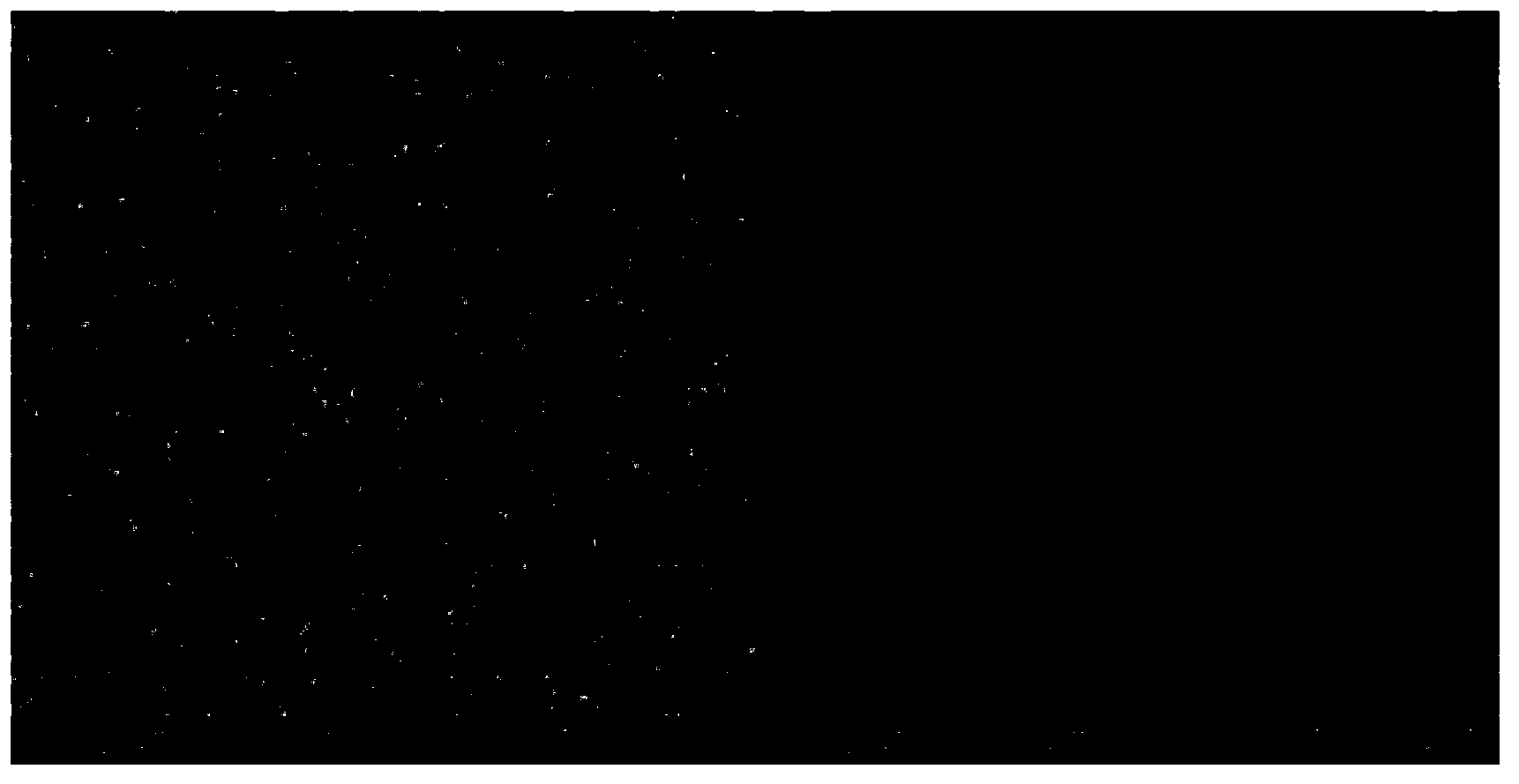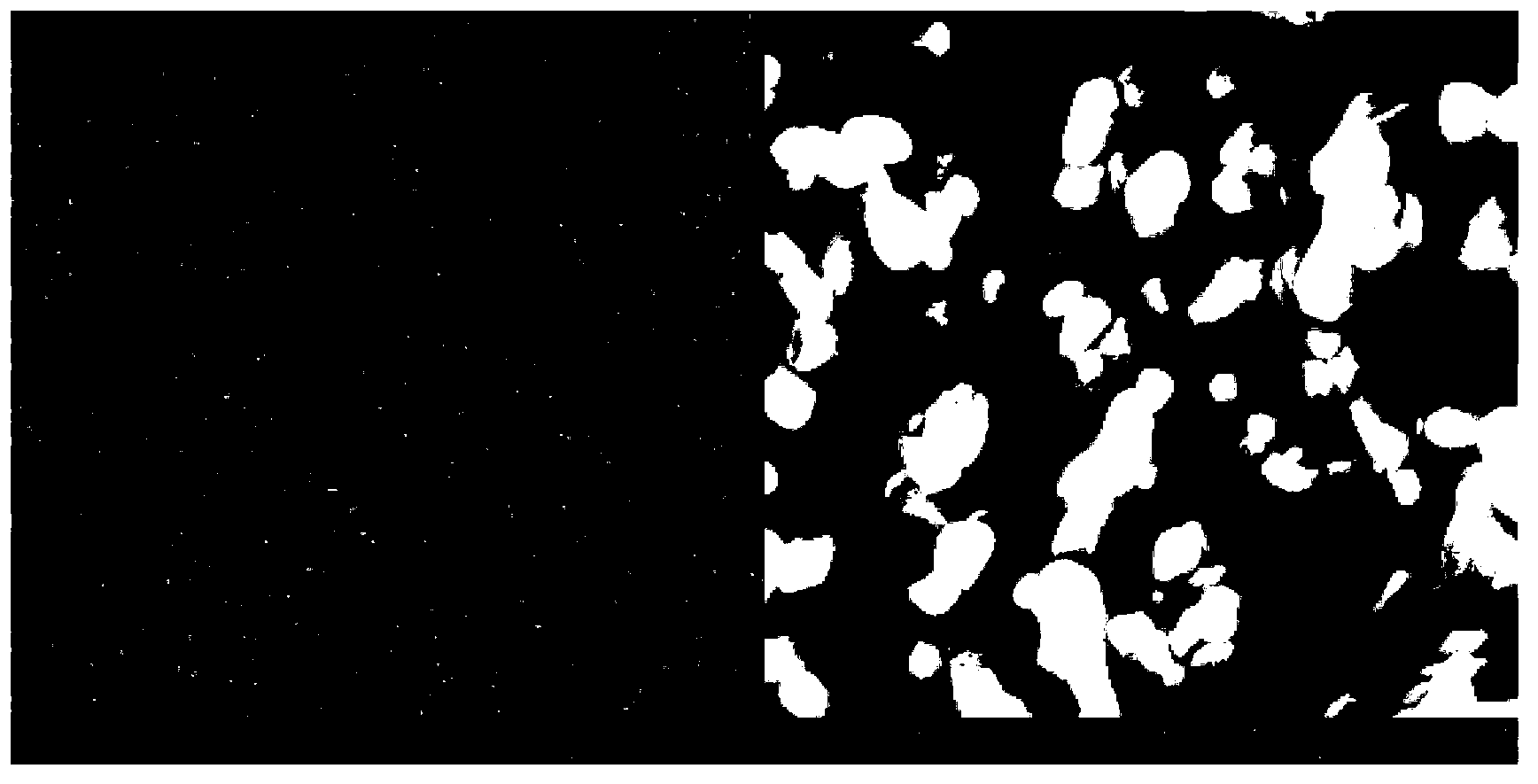Formation technology for preparation of porous or compact material with gel-casting of alcohol-water basic material slurry
A gel injection molding, alcohol water-based technology, applied in the direction of manufacturing tools, ceramic molding machines, etc., can solve the problems of unevenness, poor shape retention of products, small shrinkage deformation, etc., to achieve uniform pore distribution, poor shape retention, and size consistent effect
- Summary
- Abstract
- Description
- Claims
- Application Information
AI Technical Summary
Problems solved by technology
Method used
Image
Examples
Embodiment example 1
[0032] (1) Prepare 100 g of a mixed solvent with a volume ratio of ethanol-water of 94:6, and prepare a premixed solution with 15 g of acrylamide monomer and 0.3 g of N,N'-methylenebisacrylamide binder.
[0033] (2) Add 75g of 99 alumina ceramic powder (0.3~1.5μm) (solid content is 15%) and 0.6wt% polyacrylamide dispersant to the premixed solution, and adjust the pH of the system to 10 with ammonia water at the same time. The planetary ball mill was milled for 6 hours, and the speed of the ball mill was 200r / min.
[0034] (3) Remove air bubbles from the ball-milled mixture, add initiator ammonium persulfate and catalyst tetramethylethylenediamine, stir evenly, pour it into a mold and let it stand for 20-40 minutes to obtain a wet green body with a certain strength.
[0035] (4) Take out the wet green body after shaping, put it into the drying room to heat up, and at the same time blow in hot air to dry it, start from 50°C at a rate of 0.2°C / heating to 120°C, for a total of abo...
Embodiment example 2
[0040] Prepare 100g of ethylene glycol-water mixed solvent with a volume ratio of 6:4, and prepare a premix solution with 15g of acrylamide monomer and 0.3g of N,N'-methylenebisacrylamide binder. Others are basically consistent with Embodiment 1. Just replace and dry the wet green body in absolute ethanol for 12 hours, remove most of the moisture in the green body, take it out after setting the shape, put it in the drying room to heat up, and at the same time blow in hot air to dry, starting from 50°C at a rate of 0.2°C / heating to 120°C for about 6-8 hours in total to obtain a dry ceramic body.
[0041] The SEM microstructure of the alumina porous ceramics prepared using this implementation case is as follows: image 3 As shown, compared with the sintered body in Embodiment 1, the richness of the pores is slightly reduced, the pore size distribution is uniform, and the size is uniform, but the pore size is smaller than that of Embodiment 1.
[0042] The performance test of t...
Embodiment example 3
[0044] Prepare 100g of a glycerol-water mixed solvent with a volume ratio of 4:6, and prepare a premix solution with 15g of acrylamide monomer and 0.3g of N,N'-methylenebisacrylamide binder. Others are consistent with Embodiment 2.
[0045] The SEM microstructure of the alumina porous ceramics prepared using this implementation case is as follows: Figure 4 As shown, compared with the sintered body in Embodiment 1, the richness of the pores is reduced, the pore size distribution is uniform, and the size is uniform, but the pore size is smaller than that of Embodiment 2.
[0046] Performance tests were performed on the alumina porous ceramics prepared in this embodiment, the porosity was 57.97%, and the bulk density was 1.67g / cm 3 , The bending strength is 20.55Mpa.
[0047] From examples 1 to 3, it can be seen that with the decrease of the alcohol content, the porosity decreases, the bulk density increases, and the bending strength increases greatly.
PUM
| Property | Measurement | Unit |
|---|---|---|
| Bulk density | aaaaa | aaaaa |
| Bending strength | aaaaa | aaaaa |
| Bulk density | aaaaa | aaaaa |
Abstract
Description
Claims
Application Information
 Login to View More
Login to View More - R&D
- Intellectual Property
- Life Sciences
- Materials
- Tech Scout
- Unparalleled Data Quality
- Higher Quality Content
- 60% Fewer Hallucinations
Browse by: Latest US Patents, China's latest patents, Technical Efficacy Thesaurus, Application Domain, Technology Topic, Popular Technical Reports.
© 2025 PatSnap. All rights reserved.Legal|Privacy policy|Modern Slavery Act Transparency Statement|Sitemap|About US| Contact US: help@patsnap.com



